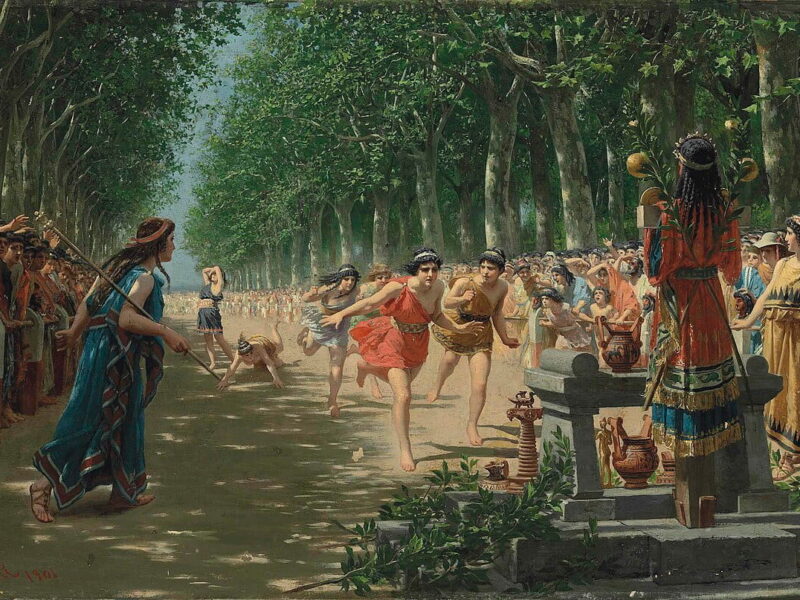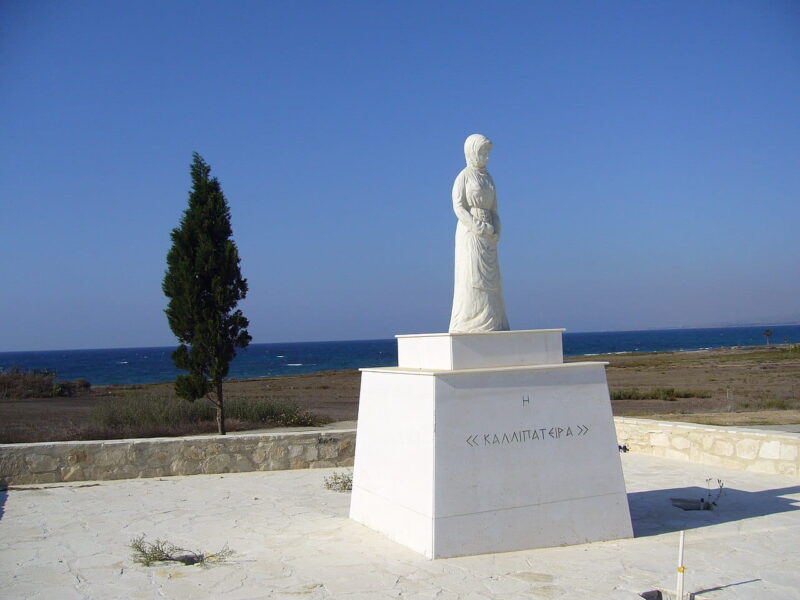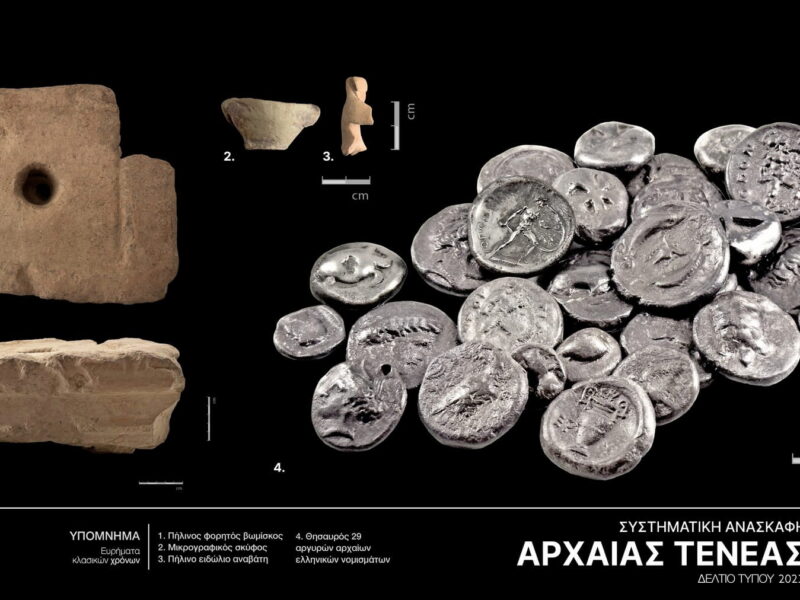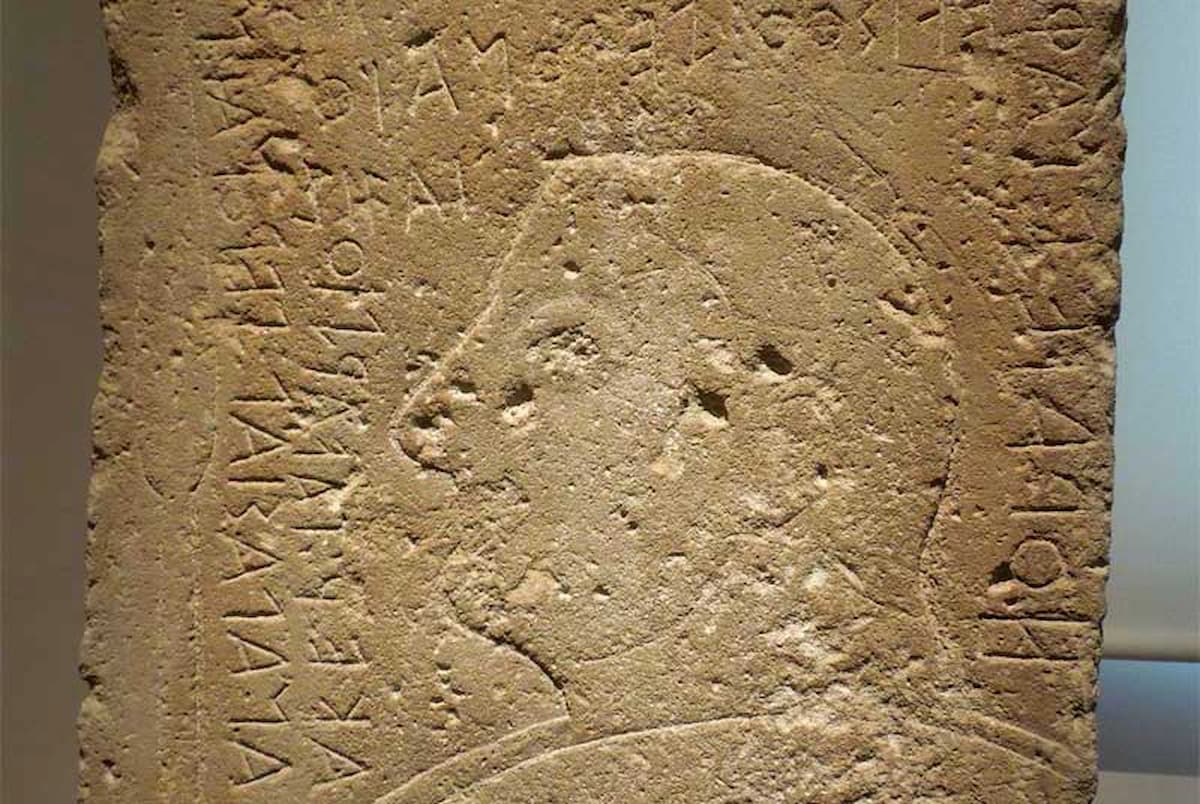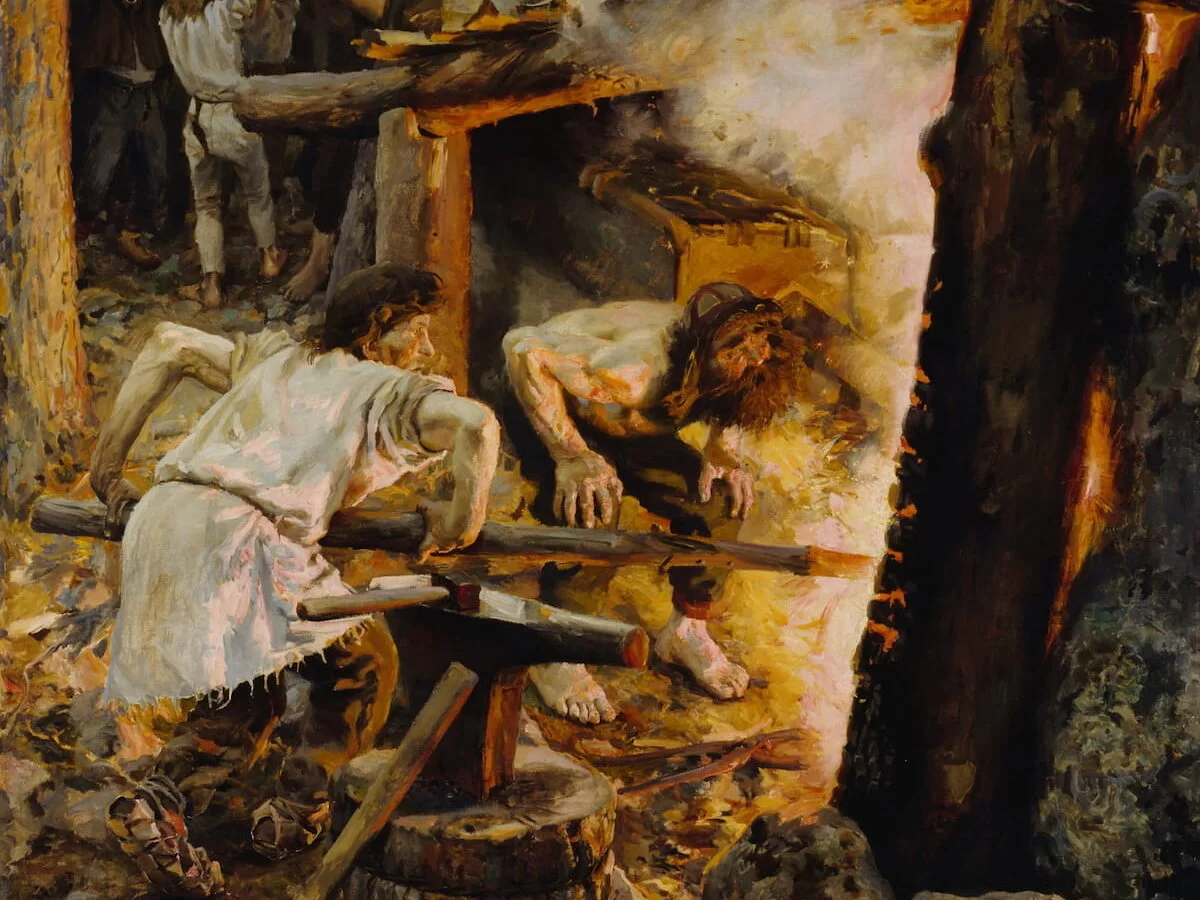Although his name doesn’t appear in epic tales or the legends of great heroes, a physical feat performed by an athlete in ancient Olympia has reached us thanks to an inscription. The athlete’s name was Bybon, and he lived in the 6th century BC, a time when sports and displays of strength were a fundamental part of Greek social and religious life.
Nothing is known about his life because the only source of information about Bybon comes from that inscription found on a sandstone block near Olympia, in the Peloponnese region, the birthplace of the ancient Olympic Games.
This block, which is now displayed in the Archaeological Museum of Olympia, weighs 143.5 kilograms (316 pounds) and has two deep grooves carved into it to form a type of handle, indicating it was used as a free weight.
The inscription carved into the same stone reads: Bybon, son of Phola, lifted me over his head with one hand. This simple statement, devoid of literary flourishes, holds an impressive feat that has fascinated historians and archaeologists for centuries.

Bybon’s feat, as described in the inscription, consisted of lifting a massive stone block over his head using just one hand. To put this achievement into perspective, it’s necessary to remember that lifting a weight of over 140 kilograms with one hand far exceeds the capabilities of most modern athletes.
Even today, when sports science and technology have advanced considerably, a lift of this magnitude would require superhuman strength. However, the inscription is clear, and the stone block still bears the marks of Bybon’s hands on it.
Why, and for what purpose, did Bybon perform such a feat? While weightlifting wasn’t an Olympic sport in the modern sense, physical strength was a highly valued attribute, and many local competitions and rituals included displays of power as part of training and ceremonies. Greek athletes, especially those who participated in sports like wrestling, boxing, and pankration (a mix of wrestling and boxing with few rules), were admired not only for their technical skill but also for their brute strength.

Some scholars, such as E. Norman Gardinier, suggest that the Greek word translated as “lift” could also mean “throw,” implying that Bybon not only lifted the weight over his head but threw it forward, which would make his achievement even more remarkable. This interpretation adds a new dimension to the Bybon, greek athletestory, elevating Bybon to an almost mythical level of strength.
The typical athlete of the time, as we know from records and black-figure vases, was the strongman, wrestler, boxer, or pankratiast. Many stories were told about their strength. One of them, named Bybon, left an interesting record in Olympia. It’s a red sandstone block that weighed 316 pounds (143.5 kg), and inscribed on it is that he threw it over his head with one hand.
Matthew Evans, in his article about Bybon, puts the feat into perspective by comparing the weight and size of the stone with other objects and with current weightlifting records:
To try to put it into context, a quick Google search of objects weighing approximately 140-150 kg includes an adult male giant panda, a medium upright piano, or two barrels of beer. These comparisons cast doubt on Bybon’s claim. That said, a comparison with recent weightlifting records makes it somewhat more plausible. The current record for the two-arm lift (a technique involving lifting a barbell from the floor to the shoulders and then over the head in two separate movements) is 267 kg. In the “snatch” technique, where the barbell is lifted from the floor to over the head in one motion, the record is 225 kg. There are no official records for either technique using one arm, though Charles Rigoulot (a French Olympic champion) is credited with the one-arm snatch record in 1929, with 115 kg (253 lbs).
His conclusion is that it’s not impossible that Bybon lifted 143.5 kg with one hand over his head, though he probably first lifted the stone with both hands to chest or shoulder height, since it’s almost impossible to grip it well enough with one hand if lifted from the ground.

It’s interesting to note the language of the inscription. The fact that the stone “speaks” in the first person, saying it was lifted by Bybon, suggests a sense of personification. This style was common in Greek inscriptions, where inanimate objects often “spoke” to recount the achievements of those who used them.
This type of inscription, written in boustrophedon (alternating lines written in opposite directions), was common in places like Olympia, where athletes recorded their accomplishments, not only to immortalize their own names but also to inspire future generations as offerings at the sanctuary.
In the case of Bybon’s inscription, it is one of the few pieces of evidence we have about athlete records in antiquity.
This article was first published on our Spanish Edition on October 18, 2024: Bybon, el atleta griego que levantaba piedras de 143 kilos con una sola mano
SOURCES
Museum of the History of the Olympic Games of Antiquity, The Stone of Bybon
Chris Galakoutis, Hellenic Athletes
Matthew Evans, A rather bould(er) claim: inscribed rocks and weightlifting in the ancient world
Wikipedia, Bybon
Discover more from LBV Magazine English Edition
Subscribe to get the latest posts sent to your email.




